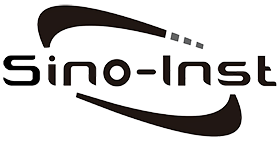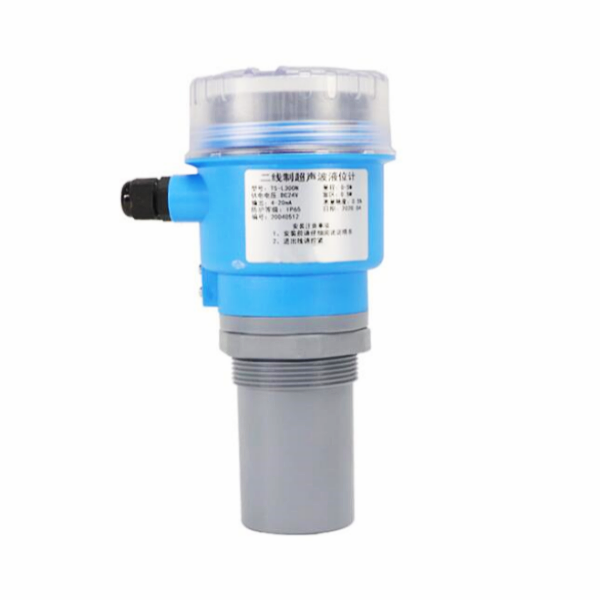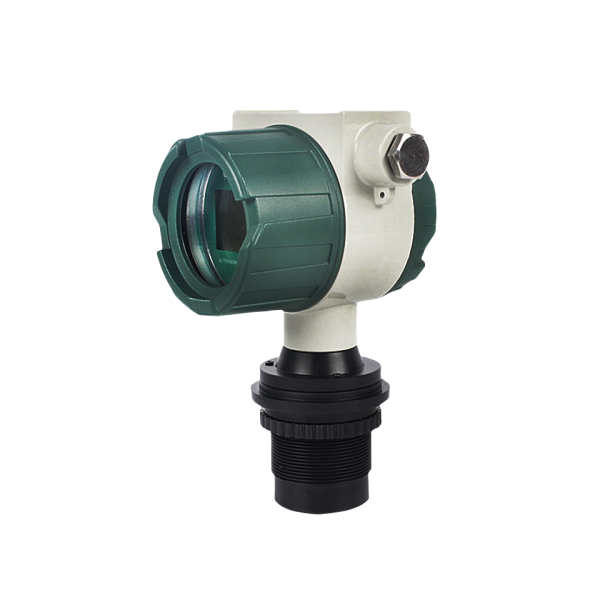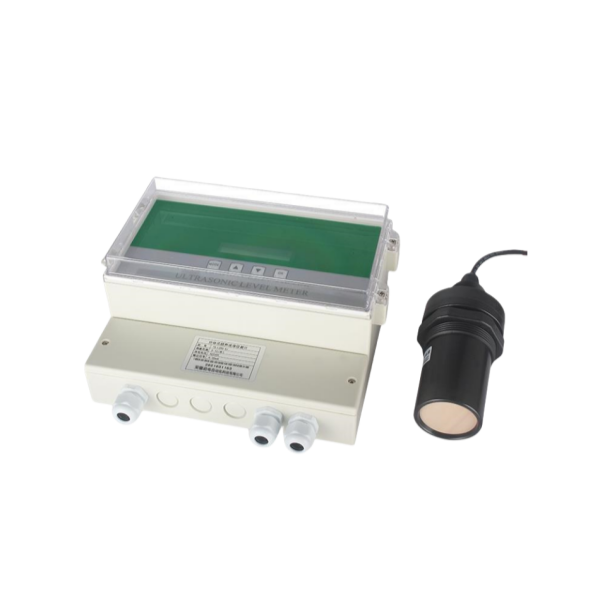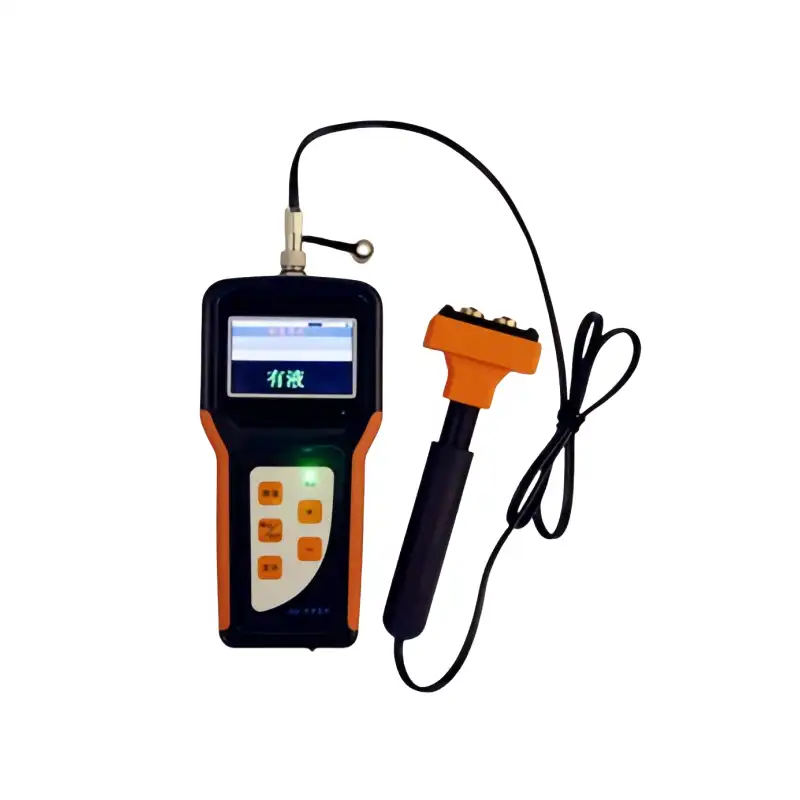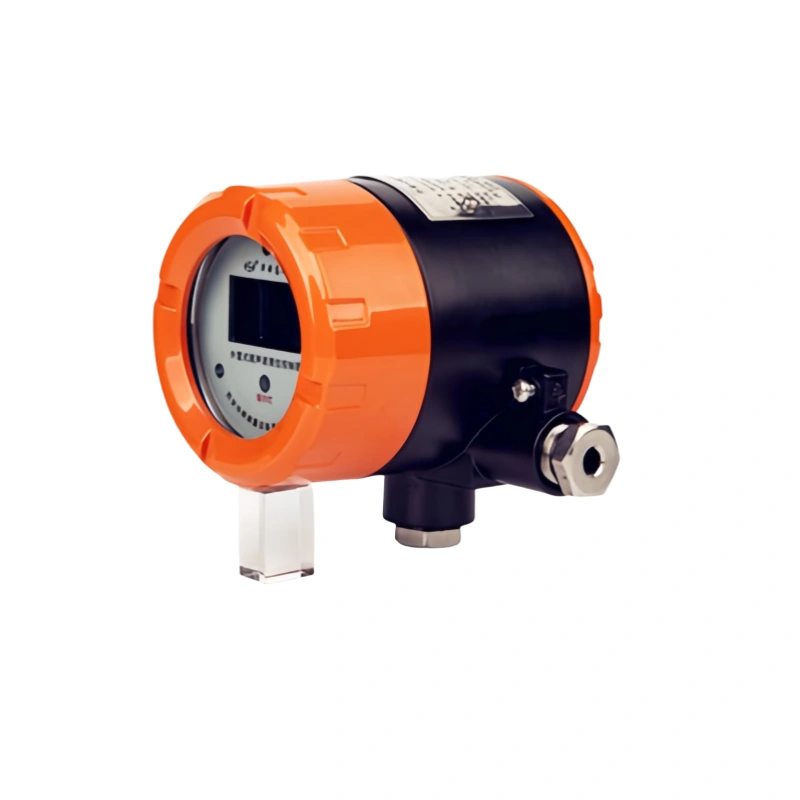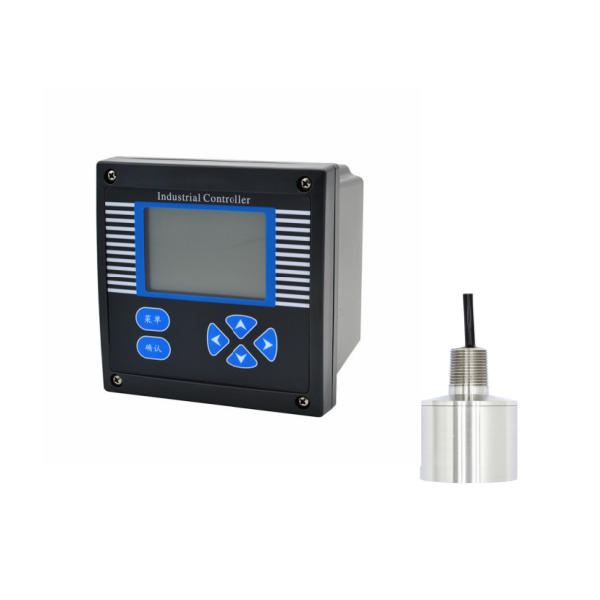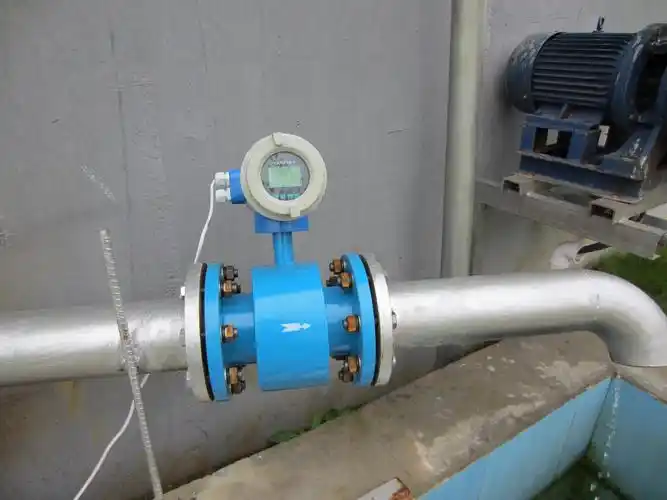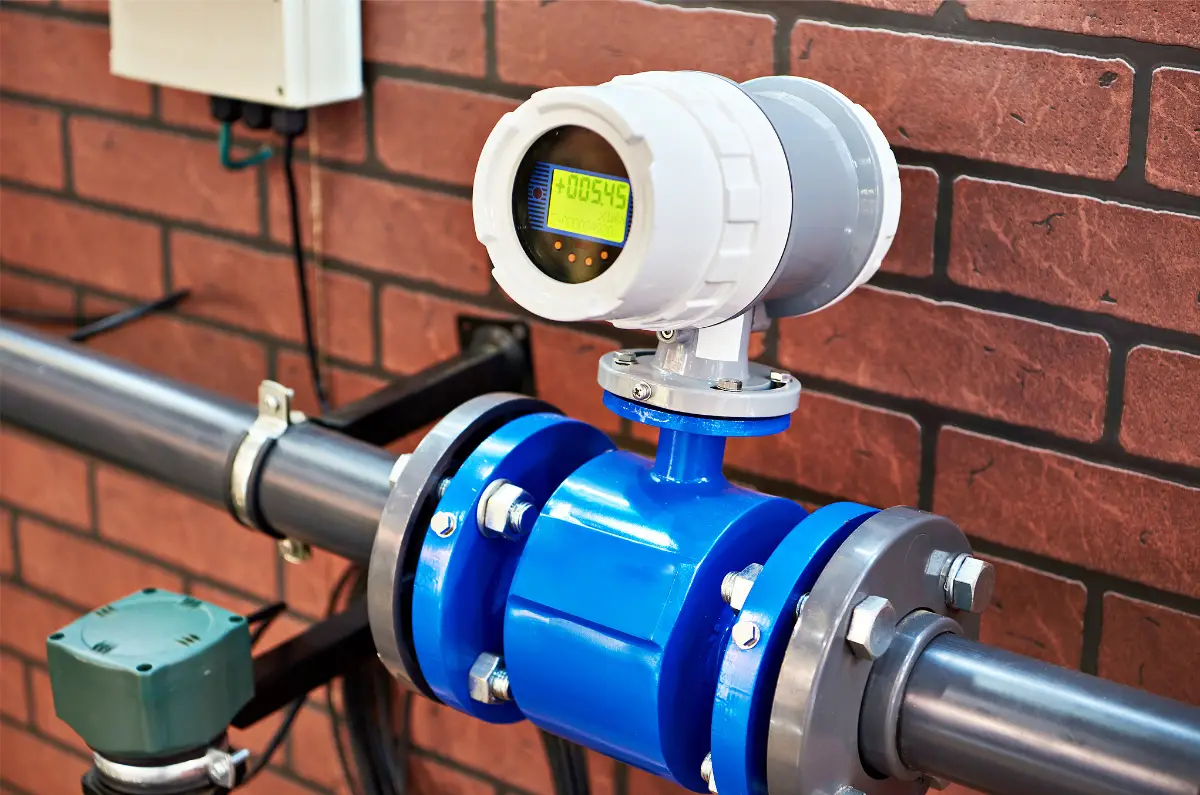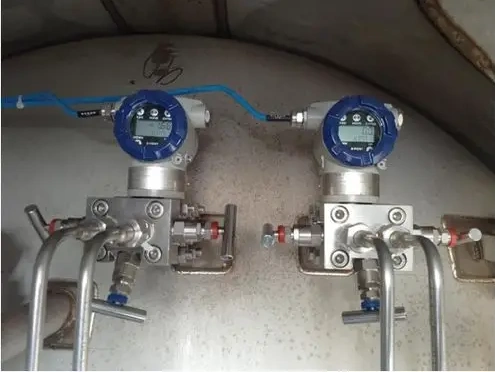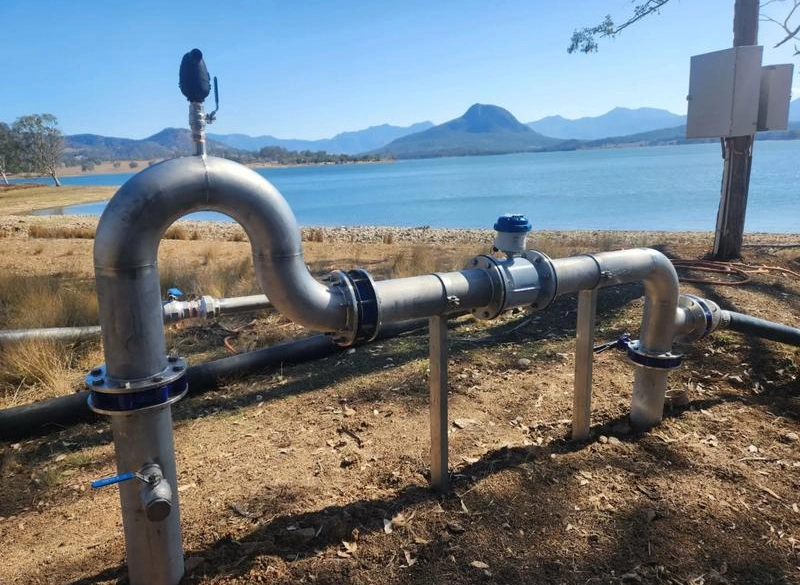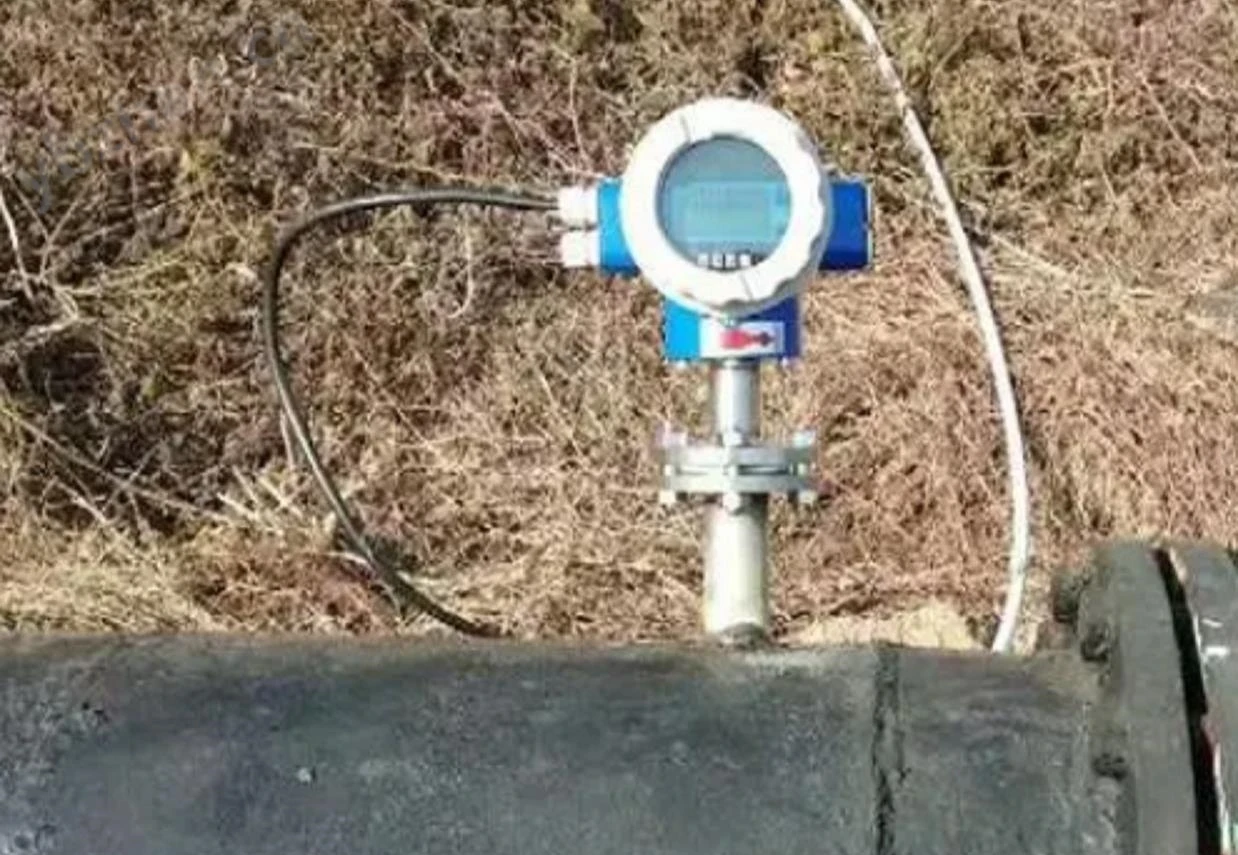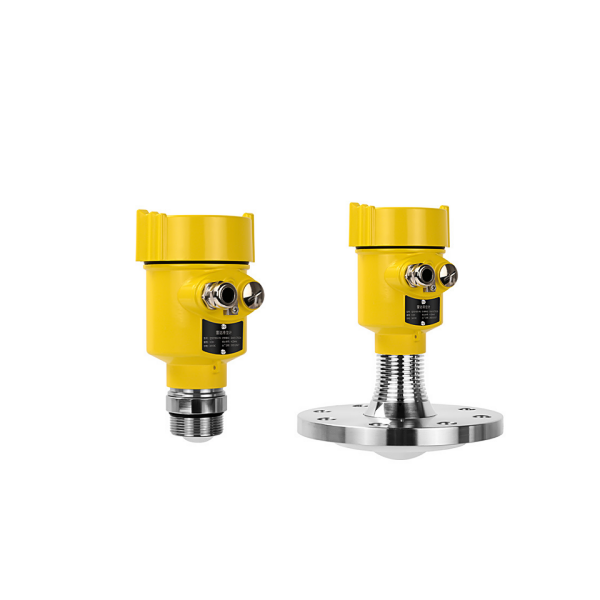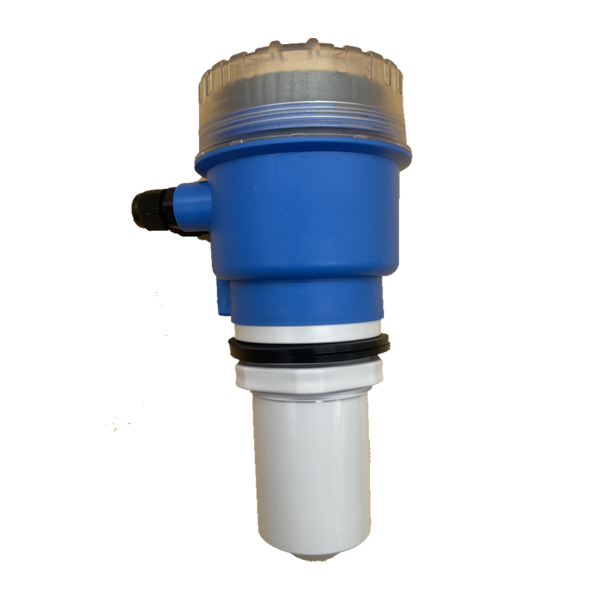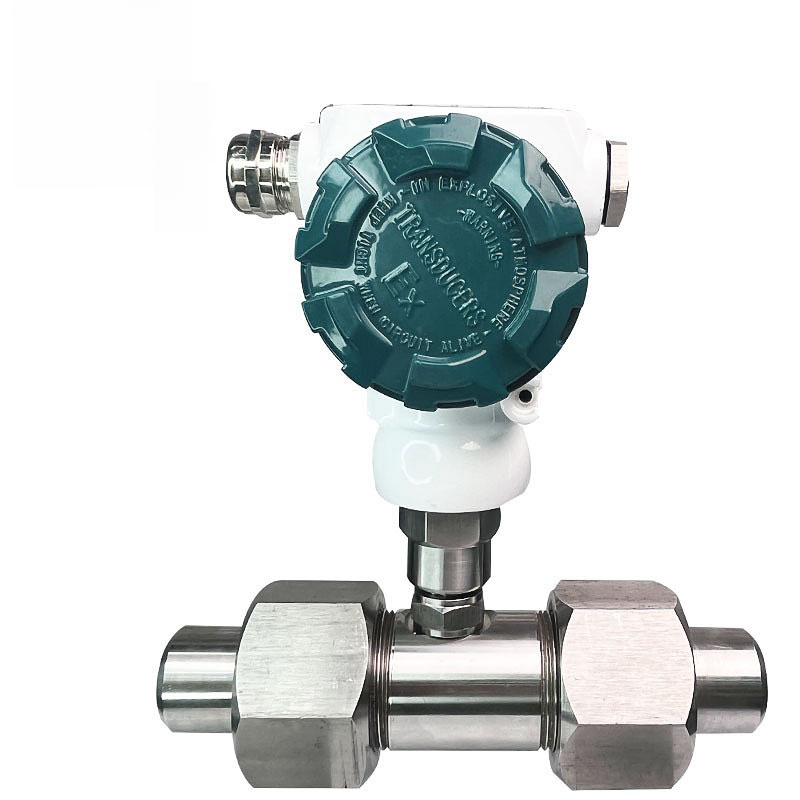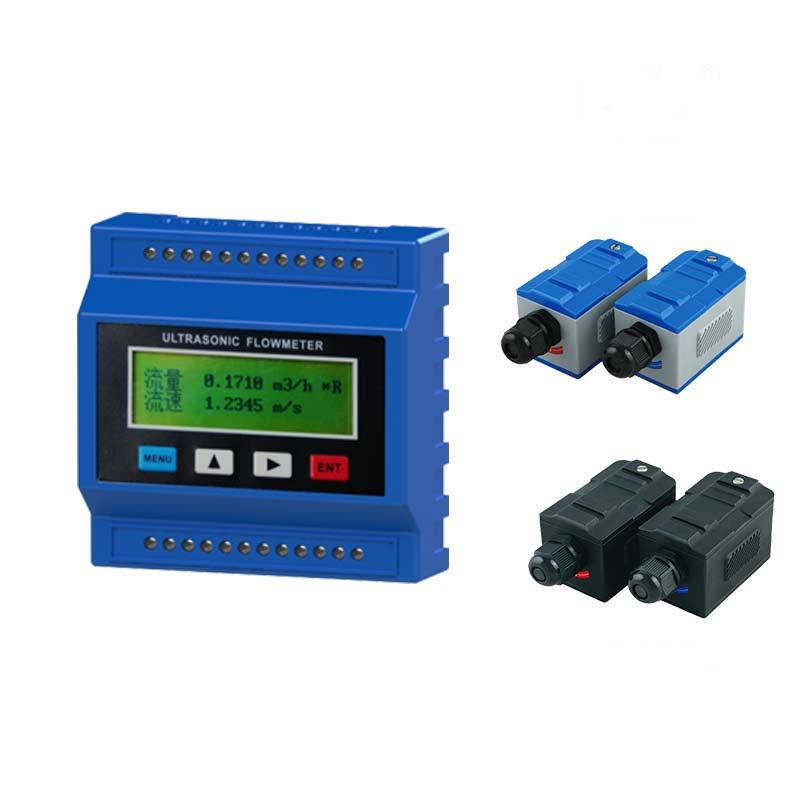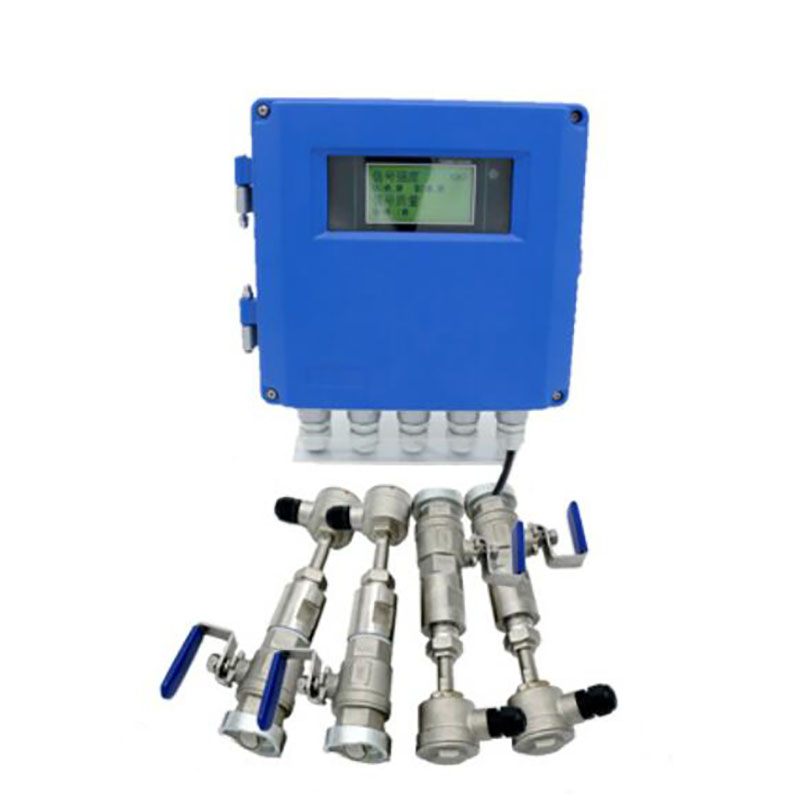An ultrasonic level transmitter is a non-contact liquid level measurement tool. An Ultrasonic level transmitter can be used to measure tank water level, pipe water level and water tank water level. It supports customization. It can output multiple signals: RS-485, RS-232, Hart, or 5-10V, etc. It is widely used in various industrial scenarios.
Ultrasonic level transmitter is a high-tech equipment widely used in the industrial field. It uses the propagation characteristics of ultrasonic waves to measure the liquid level. Its working principle is based on mature ultrasonic technology. It provides a non-contact liquid level measurement solution for industrial process control and monitoring. It is a common liquid level measurement tool characterized by high precision, flexibility, and a wide range of applications.
This article provides an in-depth introduction to the relevant knowledge of an ultrasonic level transmitter.
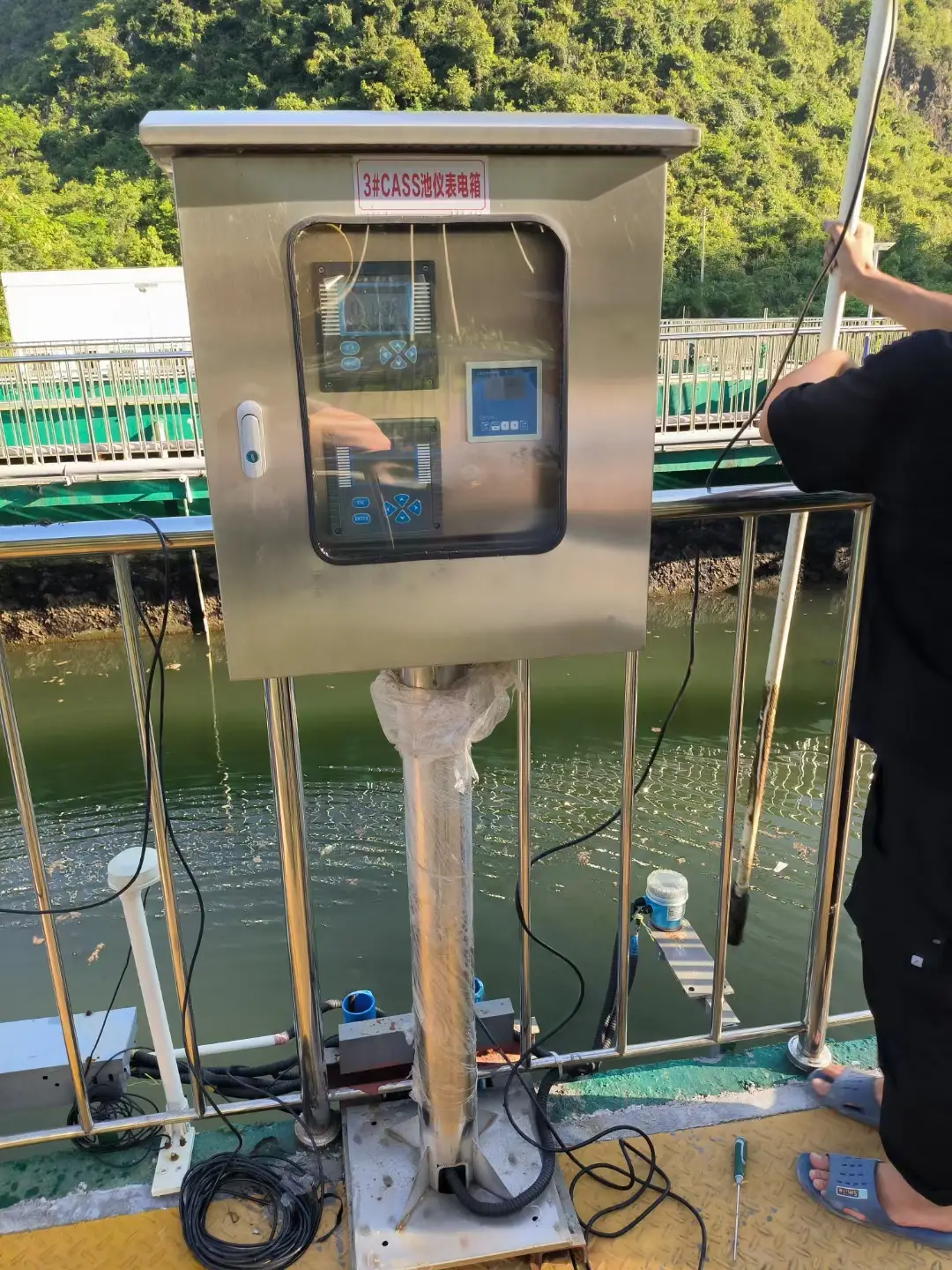
What is an Ultrasonic Level Transmitter?
An ultrasonic level transmitter is a measuring instrument. It can measure the liquid level or material level height inside containers such as storage tanks, water tanks, and tanks. It transmits ultrasonic pulses and receives the reflected signal. Thus measuring the liquid level height.
Because it uses non-contact and non-invasive technology. It is widely used in the measurement of tank liquid levels of various shapes and sizes.
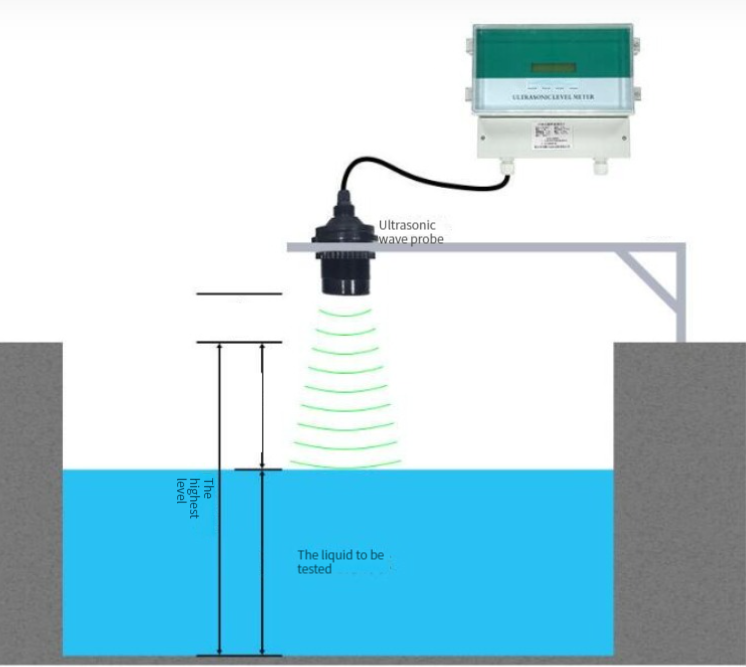
Ultrasonic Level Transmitter Features:
- Non-contact measurement
- No wear and rust problems
- Integrated design
- Small and beautiful appearance
- Easy to install
- Microprocessor control
- Intelligent signal processing technology
- Transmitter with LCD
- Multiple output modes
- Anti-RF interference
- With temperature and pressure compensation
- Can measure various corrosive media
- Not affected by the shape of the tank
Ultrasonic Level Transmitter Applications
Ultrasonic level transmitters can be widely used in various tanks. such as atmospheric pressure storage tanks, process tanks, small tanks and small containers, pump lifting stations, wastewater storage tanks, etc.
Due to its design flexibility, ultrasonic level transmitters can also be used in integrated systems or replace float switches, conductivity switches and static pressure sensors. And it can also be seen in the comprehensive application of fluid control and chemical supply systems.
1. Sewage level measurement
Because the sewage composition is complex and corrosive, floating objects are easily formed on the surface of the liquid. Therefore, the required level meter is sensitive and reliable. Ultrasonic waves have the characteristics of strong signal penetration and sensitive response. and they are the recommended choice for sewage level measurement.
2. River level measurement
At present, ultrasonic level transmitters are widely used in water level measurement in rivers, lakes and road areas. The level of data must not only be reliable, but also be able to upload data online for real-time monitoring. Ultrasonic waves can output RS485 signals to effectively meet project requirements.
3. Corrosive level measurement
In acid and alkali level measurements, not only is the liquid corroded. but also, the chemical reaction will generate heat, interfering with the level measurement. Ultrasonic waves can be customized for corrosion protection and automatic dosing ratio.
4. Particle level measurement
Particle level measurement is prone to false signals. It requires the level meter to filter clutter. The ultrasonic level meter has an intelligent algorithm to automatically remove false echoes. It is used for level measurement of materials such as tanks. The data is accurate and reliable.
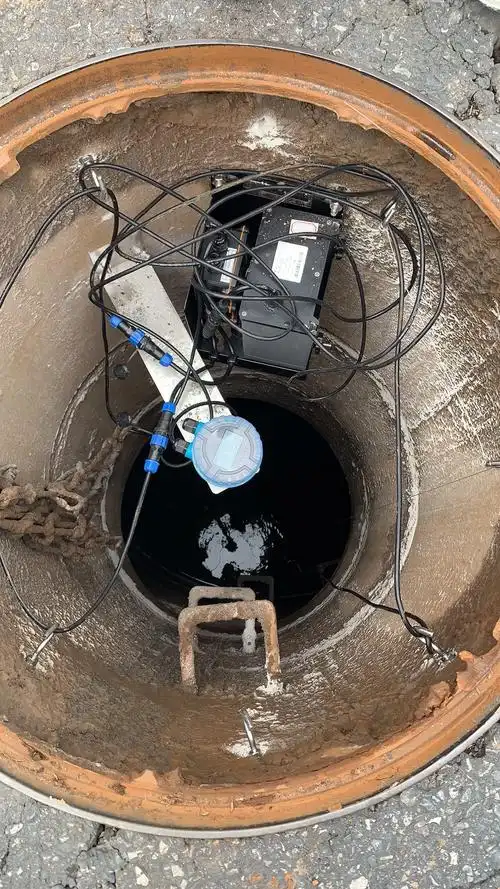
Sino-Inst Featured Product
Ultrasonic Level Transmitter Types
Types of ultrasonic level transmitters supplied by Sino-Inst:
General type: It is suitable for most level measurements. Ordinary level measurement can be applied.
Explosion-proof ultrasonic level transmitter: It is suitable for flammable and explosive media such as oil.
Split ultrasonic level transmitter: It is a transducer and a transmitter head installed separately, and the two are connected with a cable.
External ultrasonic level transmitter: It is suitable for sealed tanks. It is suitable when the tank cannot be opened.
Handheld portable: It is suitable for river water, river water, and lake depth measurements. The length can be customized. The display can be held in the hand, which is convenient for real-time observation of data.
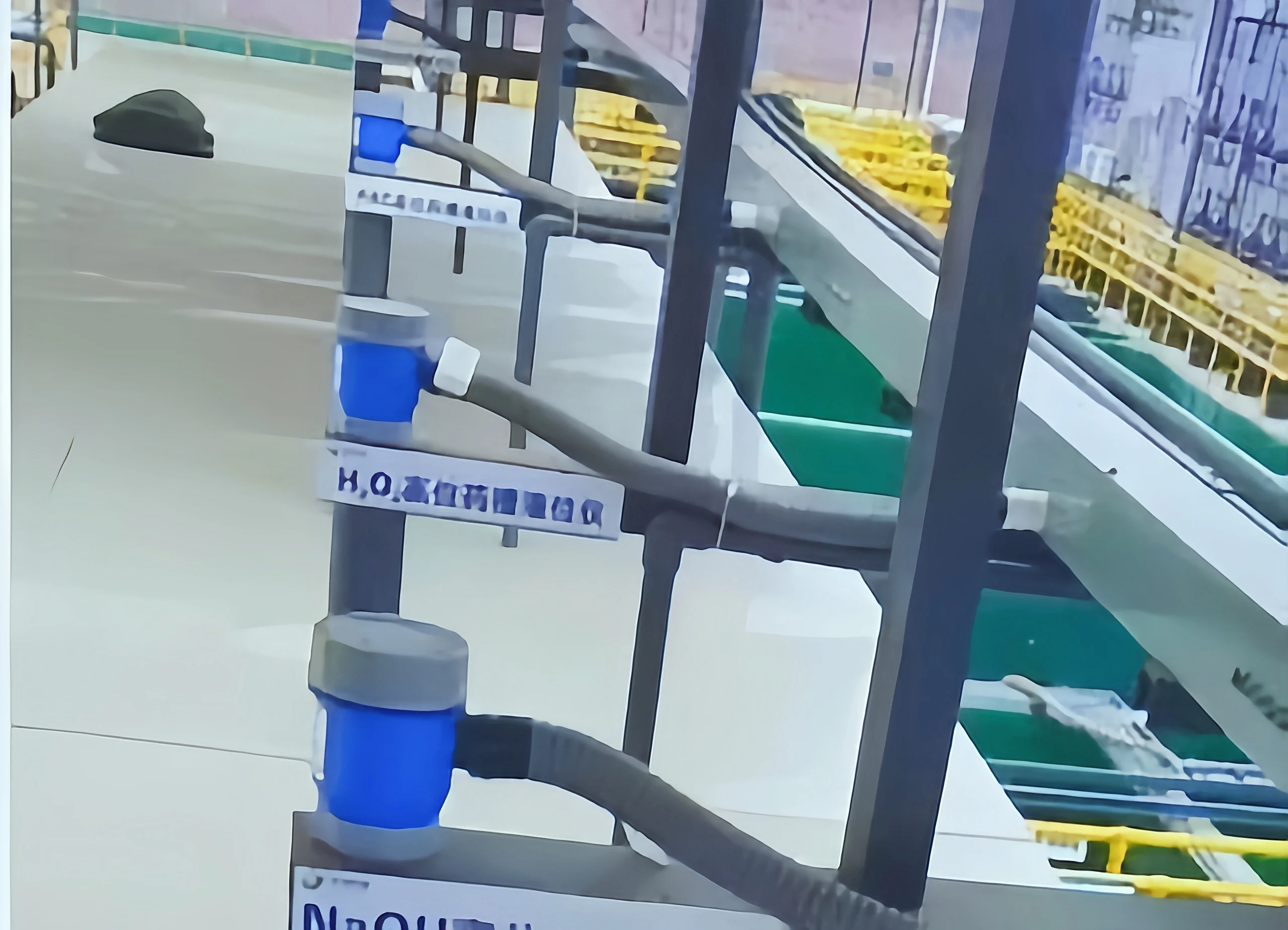
What is the Principle of the Ultrasonic Level Transmitter?
The principle is based on the propagation characteristics of ultrasonic waves in the medium. And the liquid level height is measured by transmitting and receiving ultrasonic signals. Specifically, its working principle can be summarized as follows:
The ultrasonic level meter consists of an ultrasonic transducer (probe) and a transmitter. When the instrument is working, the ultrasonic transducer will emit ultrasonic pulses of a certain frequency. These high-frequency ultrasonic pulses propagate at the speed of sound, reflect after encountering the surface of the measured medium (such as the liquid surface). and they are received by the same transducer and converted into electrical signals.
The time required for ultrasonic waves to be transmitted. And received (i.e., transit time) is proportional to the distance from the transducer to the surface of the measured medium. According to the relationship between the sound speed C and the transmission time t, the following formula can be obtained:
S=C×t2S=2C×t
Wherein,
S is the distance from the transducer to the liquid surface
C is the propagation speed of the ultrasonic wave in the medium
t is the time from the transmission to the reception of the ultrasonic wave.
According to the different sound transmission media, ultrasonic level meters can be divided into three types: solid medium, gas medium, and liquid medium.
According to the working mode of the probe, they can be divided into a self-transmitting and self-receiving single probe mode and a dual probe mode with separate transmission and reception.
In actual measurement, the propagation speed of an ultrasonic wave in the medium will be affected by various factors. such as temperature, so temperature compensation is required. The ambient sound velocity can usually be expressed by the following formula:
Ambient sound velocity = 331.5 + 0.6 × temperatureAmbient sound velocity = 331.5 + 0.6 × temperature
This can reduce the measurement error caused by temperature changes.
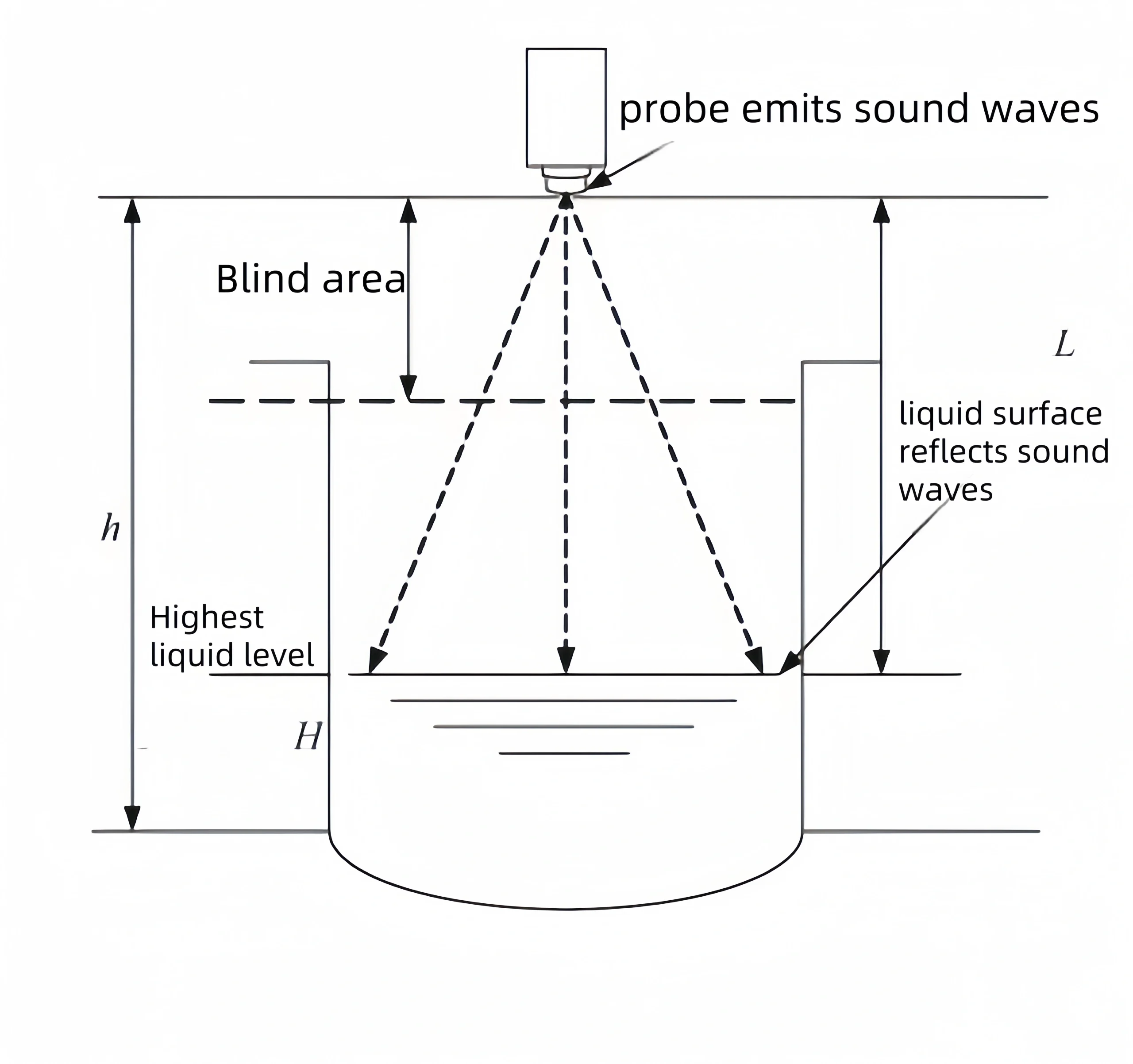
How to Calibrate an Ultrasonic Level Transmitter?
Zero calibration
Zero calibration is the first step in the calibration of ultrasonic level meters. Its purpose is to ensure that the level meter can accurately display the value of 0 when the liquid level is empty. The specific operation method can be carried out according to the instructions provided. It usually includes placing the probe in a liquid-free state. And adjusting the instrument settings to return the displayed value to zero.
Span calibration
Span calibration is performed after the zero calibration is completed. Ensure that the level meter can accurately display the full liquid level height when the liquid level is full. Again, the specific operation method can refer to the instructions provided. Span calibration usually includes placing the probe in a liquid with a known liquid level height. Adjust the instrument settings. So, the displayed value is consistent with the actual liquid level height.
Repeat calibration
In order to ensure the accuracy and stability of the level meter, the debugging results need to be verified and calibrated multiple times. Calibration can be performed under different liquid level conditions. such as empty level, 1/2 range, full level, etc. to check the accuracy and response speed of the level meter at different liquid level points. By repeating the calibration, the measurement error can be discovered and corrected in time.
Special calibration method
Special calibration methods can be used for the transit time error and sound velocity accuracy error. They may occur in the ultrasonic level meter during the measurement process. For example, the time control circuit (TGC) is used to compensate for the attenuation of the sound wave during propagation. Reduce the transit time error. By installing a temperature sensor and a real-time sound velocity compensation device, the accuracy of the sound velocity value is improved. Thereby improving the measurement accuracy.
These methods need to be selected and implemented according to specific application scenarios and measurement requirements.
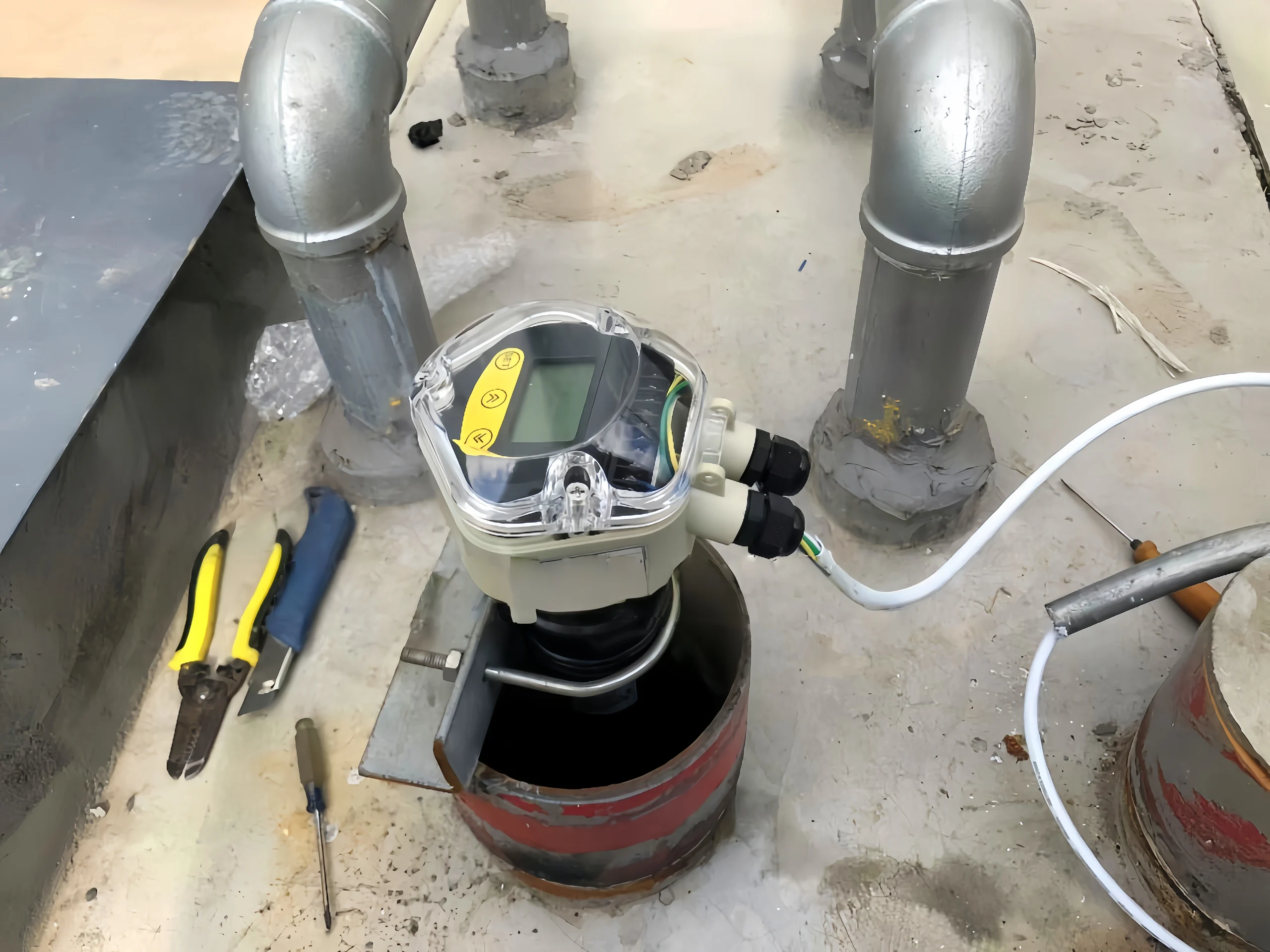
How Far Can Ultrasonic Wave Detect?
The ultrasonic transmitter transmits ultrasonic waves in a certain direction. And starts timing at the same time as the emission moment. The ultrasonic wave propagates in the air and returns immediately when it encounters an obstacle on the way. The ultrasonic receiver stops timing immediately when it receives the reflected wave.
The propagation speed of ultrasound in the air is 340m/s. According to the time t recorded by the timer, the distance (s) from the emission point to the obstacle can be calculated, that is: s=340t/2. This is the so-called time difference ranging method.
The ranging formula is expressed as:
L=C×T
where:
L is the measured distance length
C is the propagation speed of ultrasound in the air
T is the time difference of the measured distance propagation
(T is half of the time value from emission to reception).
Ultrasonic ranging is mainly used for distance measurement of reversing reminders, construction sites, industrial sites, etc. Although the current range can reach 100 meters. The measurement accuracy can often only reach the order of centimeters.
It is an ideal means for liquid height measurement. In precise level measurement, it is necessary to achieve millimeter-level measurement accuracy. But the current domestic ultrasonic ranging special integrated circuits have only centimeter-level measurement accuracy.
Do Magnets Affect Ultrasonic Sensors?
Magnets will affect the propagation path of ultrasound, thereby changing the propagation speed and direction of ultrasound.
This will cause the propagation path of ultrasound in the fluid to change, thereby affecting the measurement accuracy of the flow meter. In addition, magnets will also interfere with the ultrasonic signal, thereby affecting the stability and accuracy of the signal.
What are the Limitations of an Ultrasonic Level Sensor?
There are blind spots in the measurement and it is easily affected by temperature and dust, and the requirements for the use scenario are strict.
For example, there should be no obstacles under the ultrasonic level sensor. It cannot be used to measure pressure vessels. It cannot be used in places with water mist, a large amount of foam media, and volatile media.
Ultrasonic level transmitters have unique advantages in measuring liquid levels. It is not affected by the properties of the medium, the size of the pipe, and the shape.
Sino-Inst’s ultrasonic level transmitter supports customization. We can provide you with free level measurement solutions. If you have questions about level measurement. Please contact us immediately. We can also provide you with other level measurement tools.
